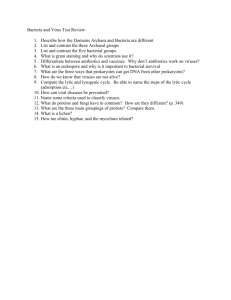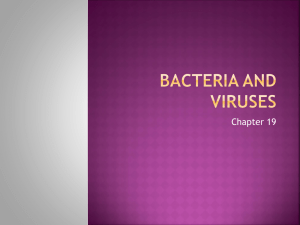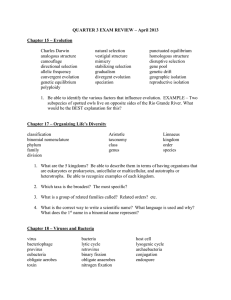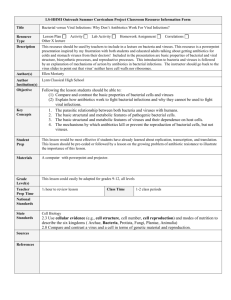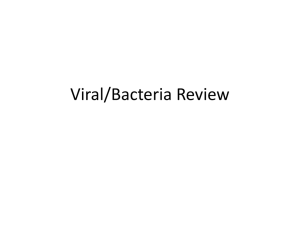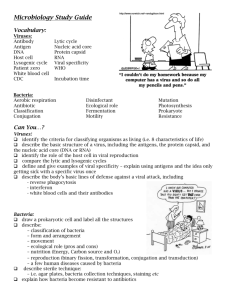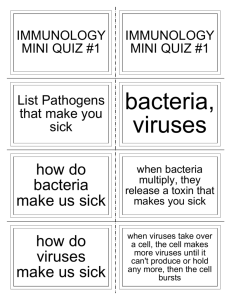Virus/Bacteria Study Guide (Chapter 18) 1. Know the terms: a. Virus
advertisement
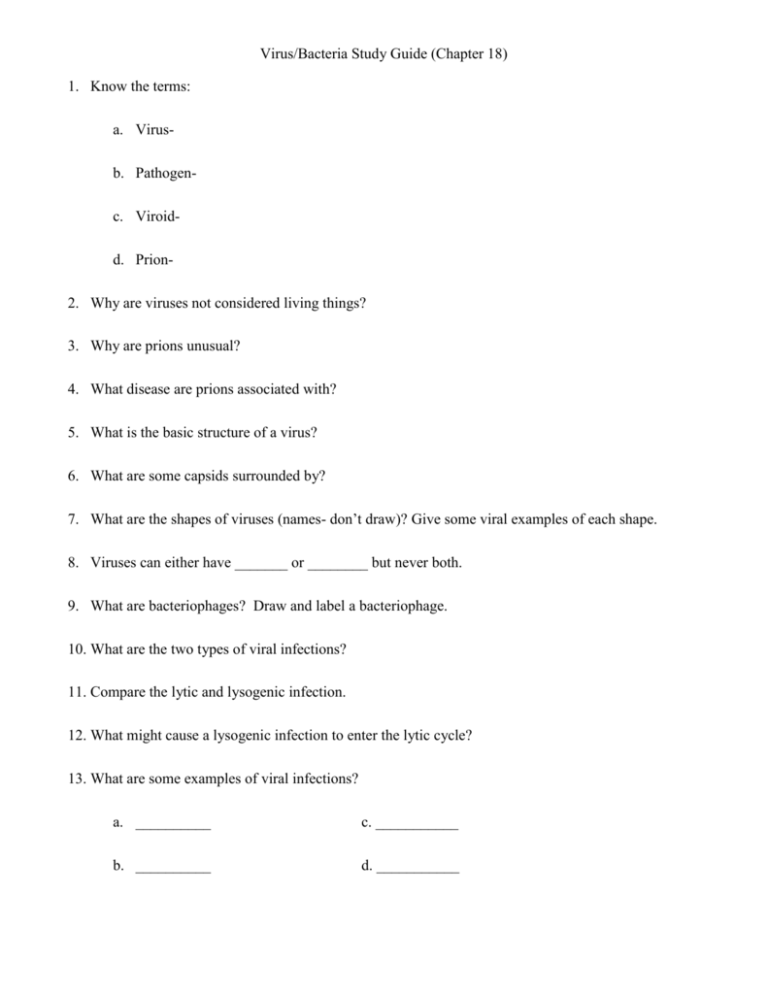
Virus/Bacteria Study Guide (Chapter 18) 1. Know the terms: a. Virusb. Pathogenc. Viroidd. Prion2. Why are viruses not considered living things? 3. Why are prions unusual? 4. What disease are prions associated with? 5. What is the basic structure of a virus? 6. What are some capsids surrounded by? 7. What are the shapes of viruses (names- don’t draw)? Give some viral examples of each shape. 8. Viruses can either have _______ or ________ but never both. 9. What are bacteriophages? Draw and label a bacteriophage. 10. What are the two types of viral infections? 11. Compare the lytic and lysogenic infection. 12. What might cause a lysogenic infection to enter the lytic cycle? 13. What are some examples of viral infections? a. __________ c. ___________ b. __________ d. ___________ 14. What is a: a. Vaccineb. Epidemicc. Retrovirus15. How do retroviruses work differently than regular viruses? 16. What is an example of a retrovirus? 17. HOW do vaccines work? 18. Know the terms: a. Obligate anaerobeb. Obligate aerobec. Facultative aerobe19. What are the basic shapes of bacteria? 20. What is the shape of DNA in bacteria? 21. What is a plasmid? 22. What are the differences in Archaebacteria and Eubacteria? 23. What are some examples of bacterial infections? _____________________________________ 24. What is binary fission? 25. What is conjugation? 26. How do bacteria use endospores for protection? 27. What is nitrogen fixation? ____________________________________ 28. What is bioremediation? Give an example. 29. What is a toxin? 30. What are antibiotics? 31. How do antibiotics work? 32. Why do antibiotics not work on viruses? 33. How can bacteria become resistant to antibiotics? 34. What are superbugs?
